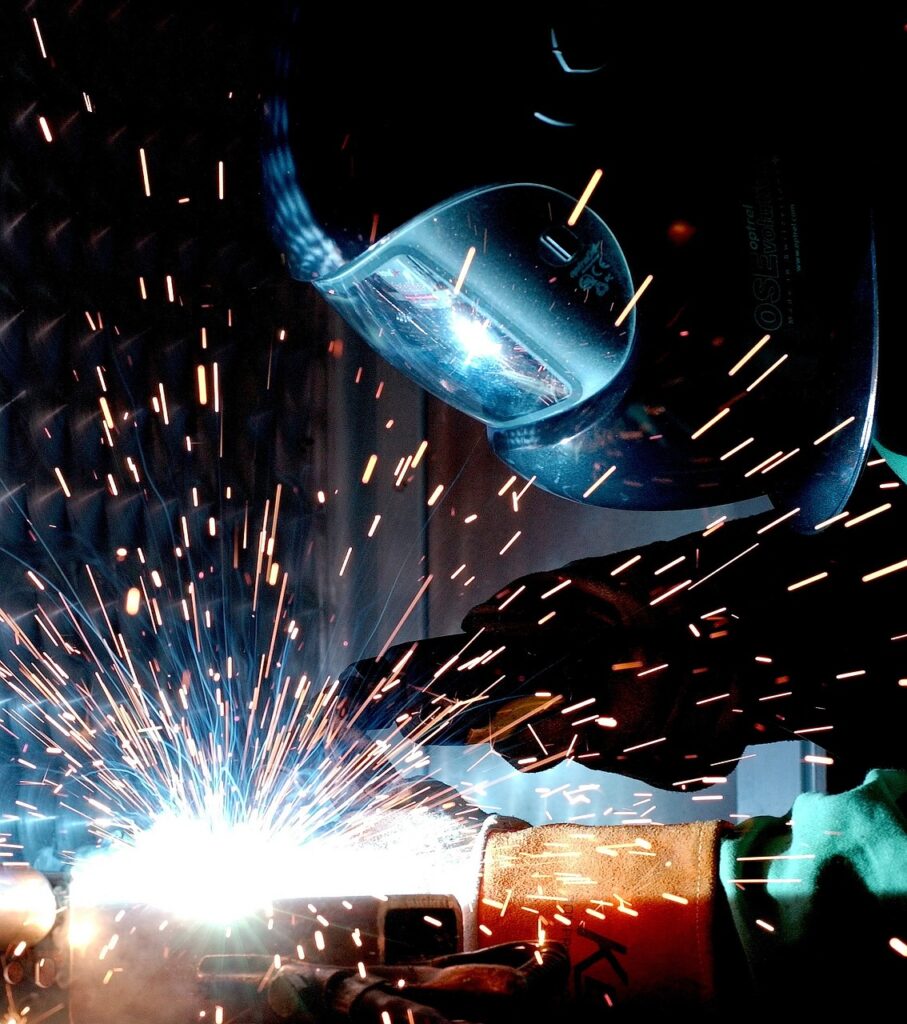Industrial Decor: Mixing And Matching Textures
Have you ever wondered how to create a cohesive and visually appealing industrial decor in your space? One key aspect of achieving this style is mixing and matching textures. In this article, I will guide you through the process of combining different textures to create a dynamic and balanced industrial look in your home. Let’s get started!

Understanding Industrial Decor
Before we delve into the world of mixing and matching textures, it is important to have a basic understanding of what industrial decor entails. Industrial decor is a design style that draws inspiration from old factories, warehouses, and industrial spaces. It is characterized by its raw, unfinished, and utilitarian aesthetic, often incorporating materials such as metal, wood, concrete, and exposed brick.
What Are Some Common Elements of Industrial Decor?
Industrial decor typically features the following elements:
- Raw materials such as metal, wood, and concrete
- Exposed pipes and ductwork
- Minimalist furniture with clean lines
- Utilitarian objects repurposed as decor
- Neutral color palettes with pops of industrial-inspired hues like rust and copper
Understanding these key elements will help you make informed decisions when it comes to mixing and matching textures in your industrial-inspired space.
Mixing Textures: A Balancing Act
One of the challenges of industrial decor is striking a balance between different textures to create a cohesive and visually interesting space. When mixing textures, it is important to consider the following factors:
- Contrast: Mixing textures with contrasting surface finishes, such as rough vs. smooth or shiny vs. matte, can add visual interest to a space.
- Scale: Varying the scale of textures can create depth and dimension in a room. For example, pairing a large-scale textured rug with smaller-scale metal accents can create a dynamic look.
- Color: Consider how different textures interact with light and color in a room. Lighter textures can make a space feel airy and open, while darker textures can add warmth and coziness.
- Function: Think about the practicality of each texture in your space. For example, pairing soft textiles with hard surfaces can create a comfortable and inviting environment.
By keeping these factors in mind, you can effectively mix and match textures to achieve a harmonious industrial decor in your home.
Combining Industrial Materials
Industrial decor is renowned for its use of a variety of materials, from metal and wood to concrete and leather. Combining these materials in your space can add depth and character to your design. Here are some tips for mixing industrial materials:
Metal and Wood
Metal and wood are often used in industrial decor to create a rugged and rustic look. To successfully combine these materials:
- Choose metal finishes that complement the natural grain of wood.
- Mix warm woods like oak or teak with cool metals like steel or iron for a balanced contrast.
- Experiment with different metal and wood finishes, such as polished vs. distressed, to add visual interest to your space.
Concrete and Leather
Concrete and leather are two materials that are commonly found in industrial-inspired spaces. To combine these materials effectively:
- Use leather upholstery on furniture pieces to soften the hard edges of concrete surfaces.
- Pair the smooth texture of leather with the rough texture of concrete for a striking juxtaposition.
- Consider adding leather accessories, such as cushions or ottomans, to bring warmth and texture to a concrete-heavy room.
By combining industrial materials like metal, wood, concrete, and leather, you can create a rich and dynamic texture palette in your space.
Incorporating Textiles and Soft Furnishings
While industrial decor is often associated with hard surfaces and raw materials, incorporating textiles and soft furnishings can add warmth and comfort to an industrial-inspired space. Here are some tips for mixing textures with textiles:
Rugs
Rugs are a great way to introduce texture and warmth to a room with hard floors or industrial finishes. When choosing a rug for your industrial space:
- Opt for natural materials like jute or wool for a durable and sustainable option.
- Consider rugs with a low pile or distressed finish to complement the rugged aesthetic of industrial decor.
- Experiment with different textures, such as shaggy or woven, to add depth and visual interest to your space.
Throw Pillows
Throw pillows are an easy and affordable way to introduce different textures and patterns to your industrial decor. When selecting throw pillows:
- Mix and match different materials, such as leather, velvet, or linen, to create a layered look.
- Play with patterns and textures to add a pop of color and interest to a neutral industrial palette.
- Experiment with different sizes and shapes of throw pillows to add variety and comfort to your space.
Drapery
Drapery can soften the hard lines of industrial windows and walls while adding warmth and texture to a room. When choosing drapery for your industrial space:
- Opt for natural fabrics like linen or cotton for a soft and airy feel.
- Consider textured or sheer drapes to filter light and add depth to your space.
- Experiment with different drapery styles, such as grommet or pinch pleat, to complement the overall aesthetic of your room.
Incorporating textiles and soft furnishings into your industrial decor can create a cozy and inviting atmosphere while adding depth and texture to your space.

Playing with Lighting Effects
Lighting is a crucial element in any design scheme, and industrial decor is no exception. By playing with different lighting effects, you can enhance the textures of your space and create a dramatic and dynamic atmosphere. Here are some tips for mixing textures with lighting:
Exposed Bulbs
Exposed bulbs are a hallmark of industrial lighting and can add a touch of authenticity to your decor. When using exposed bulbs:
- Choose vintage-style bulbs with filament designs for a warm and nostalgic glow.
- Experiment with different bulb shapes, such as globe or Edison, to achieve the desired lighting effect.
- Consider using pendant lights with exposed bulbs to create a focal point and add visual interest to a room.
Track Lighting
Track lighting is a versatile option for industrial spaces, allowing you to highlight different textures and elements in your decor. When using track lighting:
- Position the track lights to illuminate key features in your space, such as exposed brick walls or metal finishes.
- Experiment with adjustable track heads to direct light where you need it most.
- Consider using track lighting with dimmer switches to create different lighting effects and moods in your room.
Industrial Sconces
Industrial sconces are a stylish and practical lighting option for adding texture and character to your space. When using industrial sconces:
- Choose sconces with metal finishes, such as brass or bronze, to complement industrial decor.
- Position the sconces strategically to highlight textures and architectural features in your room.
- Consider using wall-mounted sconces to free up floor space and create a streamlined look in your space.
By playing with lighting effects and incorporating different lighting fixtures into your industrial decor, you can enhance the textures of your space and create a visually striking atmosphere.
Creating Visual Interest with Art and Decor
Art and decor are essential components of any design scheme, adding personality and character to a space. In industrial decor, art and decor can be used to introduce different textures and patterns, creating visual interest and depth. Here are some tips for mixing textures with art and decor:
Industrial Artwork
Industrial artwork, such as vintage posters, architectural prints, or abstract paintings, can add a unique touch to your industrial decor. When using industrial artwork:
- Choose pieces that incorporate industrial materials or themes, such as metal, concrete, or machinery.
- Mix different art styles and mediums to create a dynamic and eclectic gallery wall.
- Consider using oversized artwork to make a statement and anchor your space.
Decorative Objects
Decorative objects are a great way to introduce texture and personality to a room. When selecting decorative objects for your industrial space:
- Mix and match different materials, such as metal, glass, or ceramic, to create a curated and collected look.
- Play with different shapes and sizes to add variety and visual interest to your decor.
- Group decorative objects together to create vignettes and focal points in your room.
Textile Wall Hangings
Textile wall hangings are a popular choice for adding texture and warmth to industrial spaces. When using textile wall hangings:
- Choose pieces made from natural fibers like cotton or wool for a soft and tactile finish.
- Experiment with different weaving techniques, such as macrame or tapestry, to add depth and dimension to your walls.
- Consider using textile wall hangings with fringe or tassels to create a bohemian and eclectic vibe in your space.
By incorporating art and decor with different textures and patterns into your industrial decor, you can create a visually interesting and dynamic atmosphere that reflects your personal style.

Conclusion
Mixing and matching textures is a key aspect of creating a cohesive and visually appealing industrial decor in your home. By understanding the elements of industrial design, combining different materials, incorporating textiles and soft furnishings, playing with lighting effects, and adding art and decor, you can achieve a balanced and harmonious texture palette in your space. Remember to experiment, have fun, and let your creativity shine as you create your industrial-inspired oasis. Happy decorating!

